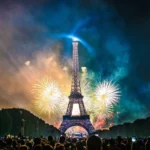India’s Independence Day on August 15, 2024, marks the 77th anniversary of the country’s liberation from British colonial rule. This day is a profound celebration of freedom, unity, and the rich tapestry of India’s cultural heritage. It is a moment to remember the sacrifices of those who fought for the nation’s sovereignty and to reflect on the progress India has made since gaining independence.
Historical Significance
The struggle for independence in India was long and arduous, spanning nearly two centuries. The British East India Company initially established a foothold in India in the 1600s, gradually expanding its control over large parts of the subcontinent. The 1857 revolt, often referred to as the First War of Independence, was a significant, though ultimately unsuccessful, uprising against British rule. It set the stage for a more organized and widespread movement that would emerge in the early 20th century.
The Indian National Congress, founded in 1885, became the principal organization leading the freedom struggle. Leaders like Mahatma Gandhi, Jawaharlal Nehru, Subhas Chandra Bose, and Sardar Vallabhbhai Patel, among others, spearheaded various campaigns to demand independence. Gandhi’s philosophy of non-violence and civil disobedience became the cornerstone of the movement, inspiring millions to participate in protests, marches, and boycotts against British rule.
The Quit India Movement of 1942, led by Gandhi, marked a decisive turn in the freedom struggle, demanding an end to British rule in India. Despite severe repression by the British authorities, the movement galvanized the Indian population and intensified the call for independence. Finally, after years of persistent struggle, India achieved its independence at the stroke of midnight on August 15, 1947.
The First Independence Day
The first Independence Day was marked by a wave of emotions across the country—joy, relief, and pride, but also sorrow and pain, as the partition of India and Pakistan led to one of the largest mass migrations in history, accompanied by widespread communal violence. On August 15, 1947, Jawaharlal Nehru, the first Prime Minister of independent India, delivered his iconic “Tryst with Destiny” speech, heralding a new era for the country. The Indian tricolor was hoisted above the Red Fort in Delhi, symbolizing the end of British rule and the birth of a sovereign nation.
Celebrations Across the Nation
Independence Day is celebrated with great enthusiasm across India. The central event takes place at the Red Fort in Delhi, where the Prime Minister hoists the national flag and delivers a speech to the nation. This speech reflects on the country’s achievements, the challenges ahead, and the government’s plans for the future. The ceremony is attended by dignitaries, military personnel, and citizens, and is broadcast live across the country.
1. Flag Hoisting and Parades:
– In addition to the national ceremony in Delhi, flag hoisting ceremonies are held at state capitals, district headquarters, schools, colleges, and government offices. The Indian tricolor flutters proudly as the national anthem is sung, and patriotic songs fill the air.
– Parades are organized by the armed forces, paramilitary forces, and police, showcasing India’s military strength, cultural diversity, and technological advancements. The parade at the Red Fort includes a display of military equipment, a march-past by the armed forces, and a vibrant cultural program.
2. Cultural Programs and Events:
– Cultural programs featuring traditional dances, music, and performances are held across the country, reflecting India’s rich cultural heritage. Schools and colleges organize special assemblies, where students perform skits, recite poems, and participate in debates centered around the theme of independence.
– In recent years, the significance of India’s Independence Day has also been celebrated internationally, with Indian embassies and consulates organizing events for the Indian diaspora, which often include flag hoisting, cultural performances, and community gatherings.
3. Public Celebrations:
– Public spaces, government buildings, and monuments are illuminated with the colors of the Indian flag. The Rashtrapati Bhavan, India Gate, and various other landmarks in Delhi and across the country are lit up in tricolor, creating a festive atmosphere.
– Kite flying is another popular tradition associated with Independence Day, particularly in the northern parts of India. The skies are filled with kites of all shapes and colors, symbolizing the spirit of freedom and independence.
4. Reflection and Remembrance:
– Independence Day is also a time for reflection. While it is a day of celebration, it is also an occasion to remember the sacrifices made by countless freedom fighters who laid down their lives for the country. Tributes are paid to leaders of the independence movement through speeches, documentaries, and public memorials.
– Many people observe moments of silence in remembrance of those who died during the partition, recognizing the human cost of independence. The day serves as a reminder of the values of freedom, democracy, and justice that were hard-won and must be preserved.
Challenges and the Road Ahead
As India celebrates its 77th Independence Day, the nation continues to face numerous challenges, including economic disparities, social inequalities, and environmental concerns. However, it is also a time to acknowledge the progress that has been made in various fields, from technology and education to healthcare and infrastructure.
India’s journey since independence has been marked by significant achievements, including becoming the world’s largest democracy, making strides in space exploration, and emerging as a global economic player. The country’s diversity, with its multitude of languages, religions, and cultures, remains one of its greatest strengths.
The theme for Independence Day 2024 might focus on issues like sustainability, innovation, and social cohesion, reflecting the current priorities of the nation. It is a time for citizens to renew their commitment to building a prosperous, inclusive, and harmonious society.
Conclusion
Independence Day is more than just a national holiday in India; it is a celebration of the spirit of freedom and a tribute to the resilience of a nation that has overcome immense challenges. As India marks its 77th year of independence, it stands as a testament to the enduring power of hope, unity, and the unwavering pursuit of a better future for all.












